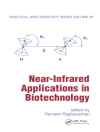Sobre o autor
Prof. György Keglevich developed a P-heterocyclic research in the subject of ring enlargement of five-membered P-heterocycles and on the utilization of the products ob...
Sobre o autor
Prof. György Keglevich developed a P-heterocyclic research in the subject of ring enlargement of five-membered P-heterocycles and on the utilization of the products obtained. He elaborated the synthesis of a number of families of compounds. Bridged P-heterocycles, precursors of low-coordinated fragments, were synthesized and utilized in phosphorylations. The study on the synthesis and reactivity of aromatic phosphorus forms another relevant part of his research. Additional research interests for Keglevich include Diels-Alder reactions, low-coordinated P-fragments, phosphine transition metal complexes, selective reductions, phosphine-boranes, azacrown ethers with phosphonoalkyl side-chains and selective reductions. Mechanisms and theoretical aspects are also of his interest. Recently, he has turned towards environmentally friendly syntheses. Environmentally friendly chemistry (green chemistry) forms new aspects of his research. It means MW chemistry, the synergism of MW and phase transfer catalysis, ionic liquids, the development of new catalysts and monitoring reactions by in situ methods. He also took part in industrial projects, such as the synthesis of pharmaceutical intermediates and products. He is the author or co-author of more than 700 publications (the majority of which appeared in international journals).
Dr. Bubun Banerjee received his Ph.D. degree from Visva-Bharati University, Santiniketan, West Bengal, India. He has nearly nine years of experience in the field of research related to green and sustainable developments. Presently he is working as an assistant professor of chemistry at the Department of Chemistry, Akal University, Talwandi Sabo, Bathinda, Punjab, India. Dr. Banerjee published more than 100 research articles in the internationally renowned journals and authored fifteen book chapters; he also co-edited eleven books and guest edited eleven different special thematic issues of different journals.












